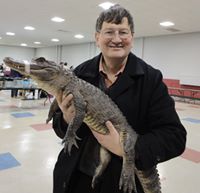What was the name of the ancient Egyptian god of fertility?
Heqet (Egyptian ḥqt, also ḥqtyt "Heqtit"), sometimes spelled Heket, is an Egyptian goddess of fertility, identified with Hathor, represented in the form of a frog. To the Egyptians, the frog was an ancient symbol of fertility, related to the annual flooding of the Nile. Heqet was originally the female counterpart of Khnum, or the wife of Khnum by whom she became the mother of Her-ur. It has been proposed that her name is the origin of the name of Hecate, the Greek goddess of witchcraft.
The beginning of her cult dates to the Early Dynastic Period at least. Her name was part of the names of some high-born Second Dynasty individuals buried at Helwan, such as prince Nisuheqet, and was mentioned on a stela of Wepemnofret and in the Pyramid Texts. Early frog statuettes are often thought to be depictions of her.
As a fertility goddess, associated explicitly with the last stages of the flooding of the Nile, and so with the germination of corn, she became associated with the final stages of childbirth. This association, which appears to have arisen during the Middle Kingdom, gained her the title She who hastens the birth (cf. the role of Heqet in the story of The Birth of the Royal Children from the Westcar Papyrus). Frog amulets representing Heqet were probably worn by women during childbirth to ensure an easy delivery.
More Info:
en.m.wikipedia.org








